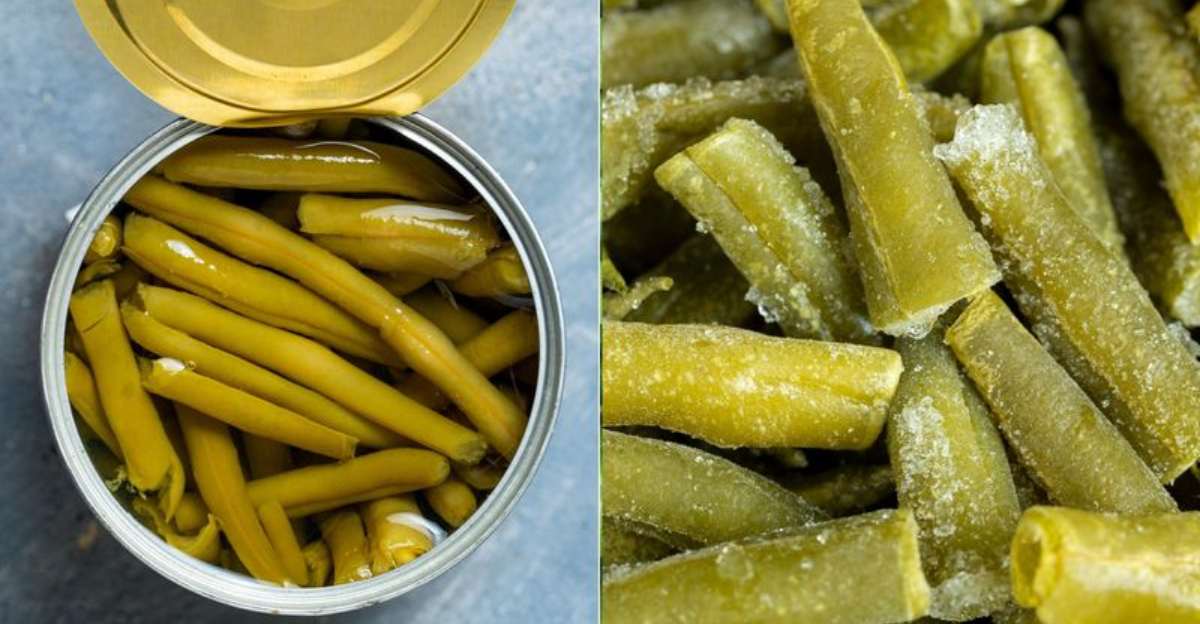Canned Vs Frozen Green Beans, With 8 Key Differences You Need To Know

Green beans are a versatile veggie that can jazz up any meal, but how you buy them matters big time! Canned and frozen options sit on different shelves, waiting to bring totally different experiences to your dinner table.
Understanding these differences helps you pick the perfect green bean for your next recipe without any kitchen disappointments.
1. Texture Tells All
Fresh green beans snap with crisp joy, but their preserved cousins tell different tales. Frozen beans maintain most of that coveted crunch when cooked properly.
Canned versions surrender to a softer, more yielding bite that some find comforting in casseroles. Your texture preference might just determine which type deserves space in your kitchen cabinet!
2. Flavor Face-Off
Frozen green beans capture summer’s garden-fresh taste, locked in within hours of harvest. Think of them as flavor time capsules waiting in your freezer!
Canned beans swim in liquid that alters their taste profile completely. Salty, slightly metallic notes replace the veggie’s natural sweetness. If authentic bean flavor matters to you, this difference is huge!
3. Nutritional Knockout
Frozen green beans win the vitamin championship by knockout! Flash-freezing preserves nearly all nutrients, especially those finicky B vitamins and vitamin C that hate heat.
When processed at high temperatures, canned foods lose a substantial amount of their nutritious content. They are still nutritious, but only around 60% of the nutrients in their frozen counterparts are present. Isn’t that shocking?
4. Sodium Showdown
Salt lovers beware! Canned green beans pack a sodium punch that might make your doctor raise an eyebrow. A single serving contains up to 400mg of sodium thanks to preservation methods.
Frozen beans keep it natural with minimal sodium unless you buy pre-seasoned varieties. For those watching blood pressure or trying to cut salt, this difference alone might settle your shopping debate!
5. Convenience Contest
Lazy cooking days call for canned green beans! Pop that top, heat, and serve in literally two minutes flat. No washing, trimming, or significant prep required.
There is a little more work involved in thawing or cooking frozen beans. Despite being faster than fresh, they will never be as easy to grab and go as their canned counterparts. Anyone have a busy weeknight dinner?
6. Shelf Life Secrets
Zombie apocalypse preppers rejoice! Canned green beans survive practically forever in your pantry, often lasting 2-5 years beyond their best-by date. Talk about food security!
Frozen beans demand freezer real estate and typically maintain peak quality for about 8-10 months. Power outages become bean emergencies when you rely on frozen options. Storage considerations matter more than you might think!
7. Recipe Compatibility
Casserole fans worship canned green beans for their soft texture that melts into dishes. The classic green bean casserole would literally fall apart without them!
Stir-fries and side dishes where vegetables should stand proud call for frozen beans. Their structural integrity holds up to quick cooking methods where texture matters. Your recipe collection might demand both types!
8. Environmental Impact
Planet warriors might prefer frozen green beans! Their production typically uses less energy and creates fewer emissions than the metal-intensive canning process.
Canned options require mining, metal processing, and heavier transportation loads. However, recycling those cans helps balance the scales somewhat. Your environmental values could sway your bean buying decisions in surprising ways!
